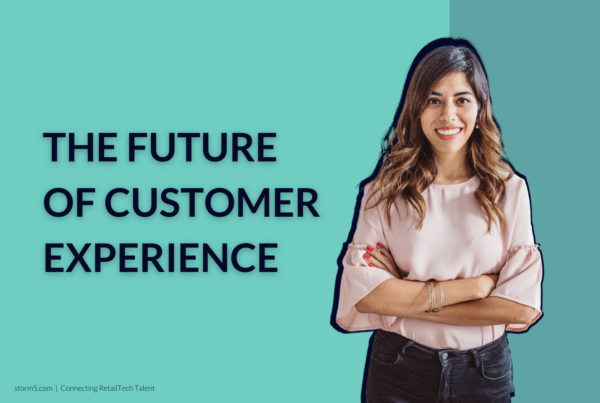E-commerce Conversion Rate Optimization Tools for 2022
Online traffic is highly inconsistent. If you can’t convince visitors to join your conversion funnel the first time, there’s a slim chance they’ll return. You…

Online traffic is highly inconsistent. If you can’t convince visitors to join your conversion funnel the first time, there’s a slim chance they’ll return. You increase your chances of getting more conversions by running effective conversion rate optimization campaigns.
More conversions equal more revenue.
However, getting to the point where you can optimise an entire e-commerce site is a difficult task. From concept to testing to design and development, there are a lot of moving elements.
It’s natural that many retailers feel they don’t have enough time, employees, or finances to launch profitable conversion rate optimization campaigns.
There is a solution to this issue, and it all begins with a thorough understanding of what conversion rate optimization entails.
What Is Conversion Rate Optimization?
Conversion rate optimization is the process of improving the likelihood of a visitor taking desired actions (conversions) on a website or landing page by optimising the site or landing page experience based on website visitor behaviour.
When first approaching conversion rate optimization, most online retailers adopt an “on-off” strategy. Measures to increase conversions usually involve some variation of the following: find pages with enough traffic for a significant sample, make a few tweaks, and then roll out the changes throughout the entire site if the results are positive.
Alternatively, they may avoid making any minor changes at all. Instead, every few years, they’ll do a complete overhaul of the entire site. They’ll revamp their logo, page templates, and any supporting material (images, copy, CTAs, and so on).
Both solutions are incorrect. Irregular tweaking yields only a fraction of the potential results. While all-or-nothing revamps are costly, time-consuming, and ineffective (more often than not).
The original definition emphasises that conversion rate optimization is a continuous process. When approaching it, retailers should test frequently and make numerous small adjustments. Following this process leads to a long-term increase in your e-commerce conversion rates that are constant and measurable.
Conversion rate optimization should assist you in better understanding the usability of your website, as well as provide customer behaviour insights and advice on how to improve your UX to fulfil your goals.
What Are Conversion Rate Optimization Tools?
Conversion rate optimization tools collect information about your website and its visitors to assist you in better understanding how people use your site and discover and test potential modifications to improve conversion rates.
Conversion Rate Optimization tools are used to help with different aspects of the conversion rate optimization process. While there is a lot of overlap amongst tools, with some claiming to be “all-in-one” solutions, the majority of them specialise.
The following is a quick summary of the main categories:
1. Analytics Tools
Web analytics tools collect numerical, quantitative data about your website and its visitors, providing insight into metrics like:
- Bounce rate
- Sessions
- Session duration
- Average order value
- Customer lifetime value
- Common drop-off or exit pages
This enables you to keep track of overall progress and make necessary adjustments based on findings. Many analytics tools integrate with A/B split-testing tools, which provide you instant feedback on whether proposed changes are viable.
Google Analytics
Google Analytics is arguably the undisputed leader in the data analytics space. Firstly, the tool is free. Its premium version – Google Analytics 360 – unlocks more detailed insights. You can use it to discover different aspects of your online business including your most popular pages, traffic sources, ad performance, etc.
Google Analytics segments your traffic so you can see who’s visiting your site – and who’s coming back. The higher the number of returning visitors, the more likely your content is interesting to your audience.
You can also see how engaging your content is using analytics. It determines how much time visitors spend on your site and how many pages they visit throughout that time. Additionally, scroll tracking allows you to watch how far users scroll down your pages. All of this information is critical in assisting you in optimizing underperforming content or pages while also increasing the amount of content that your visitors like.
Other notable analytics tools include:
- Crazy Egg is one of the best apps for using heatmaps to pinpoint customer frustrations and site inefficiencies.
- Adobe Analytics is popular amongst online retailers as the platform combines powerful, enterprise-level tracking and analysis features with ease-of-use and automated reporting.
2. Research Tools
Research tools are used to collect direct feedback from site visitors in the form of questionnaires, video sessions (in which a user records their interaction with your site and tells you what they think), exit pop-ups, and so on.
These types of tools are beneficial because they help you fill in the gaps left by analytics programmes, allowing you to collect actual human feedback with high-level data and provide a fuller overview of your site’s faults.
Usabilla
Usabilia is an enterprise-level solution designed to integrate with websites, mobile apps, and email clients.
The software, which has a wide range of functions, is fundamentally a feedback tool that allows retailers to create and integrate surveys, exit popups, icons, and more.
Customer behaviour data as it relates to the user experience is also provided. There are numerous connectors with third-party apps as a tool geared at larger businesses.
Other notable research tools include:
- HotJar’s heat-mapping tool provides a visual representation of customer clicks, taps, and scrolling behaviours. Heat maps, session recordings, and surveys are just a few of the ways HotJar can help you collect user feedback.
- Ethnio can be used to create a testing sample as well as attract traffic to your website. It effortlessly connects with most site development and design platforms and has a variety of filtering capabilities for precisely determining the demographics of test samples.
3. Wireframing and Prototyping Tools
Wireframing is a flexible technique of describing ideas and potential modifications, whereas prototyping is a more concrete manner of visualising them. Developers can then utilise these prototypes to make improvements to the website.
Adobe Experience Design
Adobe Experience Design is highly regarded by developers, and its sophisticated toolkit makes it ideal for more complicated prototypes, such as online stores with a variety of features.
If you already use Adobe products like Illustrator and Photoshop in your design stack, Experience Design’s immediate cross-compatibility will make a trial run an easy decision.
Other notable wireframing and prototyping tools include:
- Webflow is a comprehensive design solution that lets you code, launch, and prototype websites. It comes with a shopping cart, product page layouts, and checkout forms, as well as a native e-commerce platform.
- UXPin is a highly customizable tool that can be used to create a variety of e-commerce pages and architectures. The collaboration tools are unrivalled, making them excellent for teamwork.
4. A/B and Multivariate Testing Tools
Testing is carried out to compare the performance of new and proposed pages to that of existing pages. At this stage, A/B split-testing tools – or, more accurately, multivariate testing tools – can be used.
Optimizely
Optimizely is an enterprise-level “experimentation” platform. It’s one of the most well-known brands in the optimization field.
It’s primarily a platform for A/B and multivariate testing. Features enable highly targeted, controlled sample segmentation, extensive variation testing, forecasting, and in-depth analysis.
Retailers can also offer tailored messages to visitors, test chatbots, customise experiences for different devices, and more with additional eCommerce tools.
Other notable A/B and multivariate tools include:
- AB Tasty’s platform contains analytics, brainstorming tools, a visual editor, a complex set of A/B and multivariate testing options, and a variety of other implementation features such as customized messaging, pop-ups, and countdown timers.
- VWO is a comprehensive platform for research, brainstorming, and testing. It can be used to conduct all components of a conversion optimization campaign and is designed for process-driven continuous testing and includes several useful tools for tracking, evaluating, planning, testing, and execution.
There are thousands of tools available, but you don’t need all of them. Building a conversion rate optimization toolset that works for your e-commerce site should be founded on your knowledge of the characteristics of your site and audience. You can examine conversion optimization tools once you have a clear image of your needs. The best thing to do is to start experimenting with different options and sticking with the ones that work best for you. Your conversion rate will thank you for it.
If you’re an e-commerce start-up looking to scale, get in touch! Our team of micro-niche consultants have an extensive pool of experienced senior talent who will bring incredible innovation to your company.







